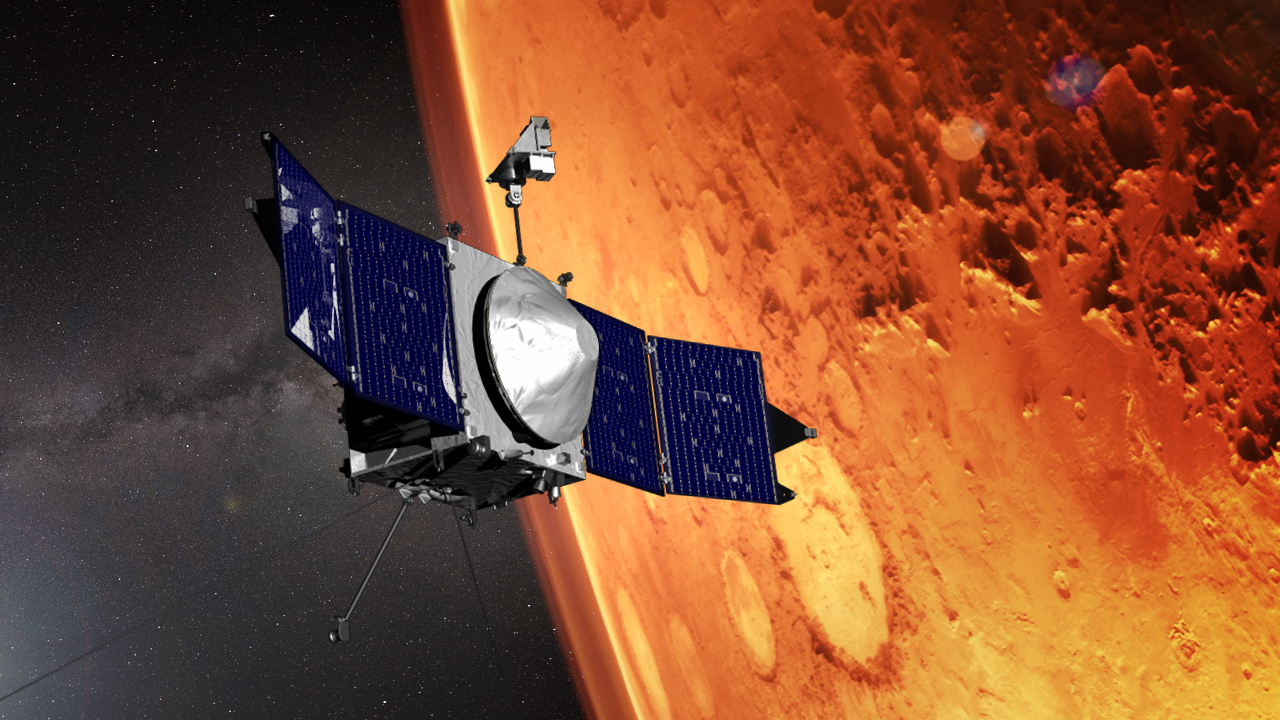MAVEN
(Data will be available later)
NASA’s Mars Atmosphere and Volatile EvolutioN (MAVEN) mission is the first specifically dedicated to studying the Martian upper atmosphere and its evolution. Launched from Cape Canaveral on November 18, 2013, aboard an Atlas-V rocket, it entered orbit around Mars on September 21, 2014. Its primary objective is to understand the role of atmospheric gas loss in the evolution of Mars’ climate and the disappearance of water by investigating the physical processes driving this erosion under the influence of solar radiation and the solar wind.
MAVEN aims to quantify the amount of atmosphere lost over time by measuring the current escape rate and characterizing the underlying mechanisms, allowing for extrapolation to past conditions. To achieve this, the mission analyzes the composition and structure of the upper atmosphere and ionosphere, from the homopause (~120 km) to the exobase (~220 km), as well as interactions with the solar wind.
MAVEN’s payload includes nine scientific instruments for in situ measurements of particles and fields, along with remote sensing observations. Since 2019, the spacecraft has also optimized its orbit to serve as a key communication relay for surface missions such as Perseverance. After multiple mission extensions, MAVEN remains active and continues to provide essential data to understand the atmospheric history of Mars.
Access to mission data |

|
Access to mission documents |

|
